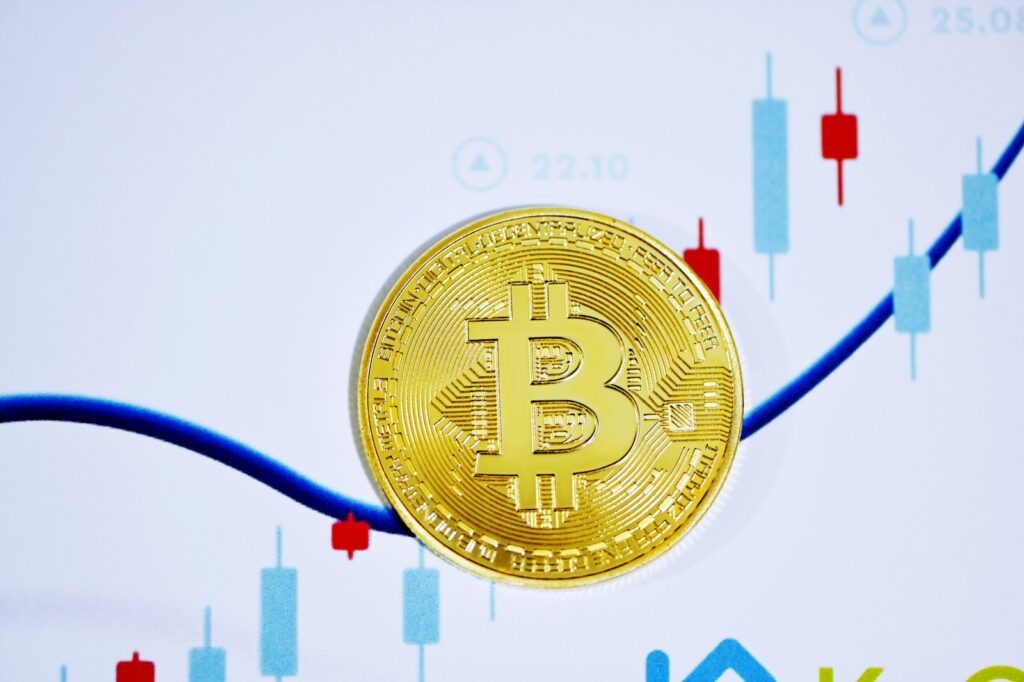Main Points:
- VanEck’s analysis indicates that acquiring 1,000,000 BTC by 2029 could potentially offset 18% of the U.S. national debt by 2049.
- The proposed BITCOIN Act would have the U.S. Treasury purchase and hold up to 1,000,000 BTC over five years and retain them for at least 20 years to strengthen the national balance sheet.
- The analysis assumes that, while U.S. national debt grows at an annual rate of 5%, Bitcoin’s value could increase by 25% per year—potentially reaching around $21 million per coin by 2049.
- This innovative approach is seen as a countermeasure to soaring debt levels, though it comes with risks including volatility and regulatory uncertainties.
- Recent trends in the digital asset space suggest increasing institutional and governmental interest in blockchain technology and alternative asset strategies.
1. U.S. Debt Challenges and the Promise of Digital Assets
In recent years, the U.S. national debt has escalated to unprecedented levels, raising concerns among economists, policymakers, and investors alike. As fiscal deficits widen and borrowing costs increase, conventional financial strategies are being reassessed. Amid this backdrop, VanEck—a prominent asset management firm—has proposed an innovative strategy: the establishment of a “Strategic Bitcoin Reserve.” This approach suggests that by acquiring a significant amount of Bitcoin (BTC) over a relatively short period, the U.S. government could effectively counterbalance a considerable portion of its debt. With the idea gaining traction through legislative proposals such as the BITCOIN Act, the concept not only challenges traditional fiscal management but also highlights the growing institutional acceptance of digital assets.
2. VanEck Analysis Details: Forecasts and Underlying Assumptions
VanEck’s analysis builds on the premise that if the U.S. Treasury were to accumulate 1,000,000 BTC by 2029, then by 2049, these assets could offset roughly 18% of the national debt—estimated to be about $21 trillion. The model begins with a starting point where U.S. debt stands at approximately $36 trillion in 2025, and the average acquisition cost of Bitcoin is assumed to be around $100,000 per coin. With the debt projected to grow at an annual rate of 5%, the national debt could reach nearly $116 trillion by 2049. In parallel, VanEck forecasts that Bitcoin’s value could appreciate at a robust 25% per year, eventually reaching a staggering price of about $21 million per coin.
This forecast is based on a series of assumptions that combine historical trends in cryptocurrency markets with projections for fiscal policy and economic growth. The analysis also makes use of a calculation tool—accessible on VanEck’s website—which allows stakeholders to modify the underlying assumptions to see how changes in the growth rates of either debt or Bitcoin’s price could affect the overall outcome. Although the assumptions are optimistic, they provide a framework for understanding how a digital asset reserve might play a role in national fiscal strategy.
3. The BITCOIN Act and Legislative Context
At the heart of this discussion is the BITCOIN Act, a legislative proposal currently under review in Congress. The act outlines a plan whereby the U.S. Treasury would gradually acquire Bitcoin—up to 1,000,000 coins over a five-year period—and hold these assets for at least 20 years. The long-term retention is intended to provide a counterbalance against the rising national debt, essentially using Bitcoin as a strategic reserve asset.
The proposal has attracted significant attention, as it represents a radical departure from traditional methods of managing public finances. Proponents argue that the act could serve as a hedge against the fiscal imbalances that threaten the stability of the U.S. economy, while critics point to the inherent risks associated with Bitcoin’s notorious price volatility and the still-evolving regulatory landscape. As legislative debates continue, the BITCOIN Act is emblematic of a broader trend toward rethinking the role of digital assets in national and global financial systems.
4. Economic Implications and Forecasts: Debt Growth vs. Digital Asset Appreciation
Central to VanEck’s analysis is the juxtaposition of two exponential trends: the growth of U.S. national debt and the potential appreciation of Bitcoin. With the national debt projected to grow at a steady 5% annually, the cumulative effect over decades is a debt figure that could severely strain the country’s fiscal capacity. In contrast, Bitcoin’s projected annual growth rate of 25% suggests a scenario where its value could skyrocket, providing a powerful counterweight to traditional liabilities.

This scenario posits that, should these trends hold true, the strategic acquisition of Bitcoin could provide not only a symbolic gesture but a tangible fiscal benefit. In essence, the appreciation in Bitcoin’s value—assuming it follows the aggressive growth trajectory outlined by VanEck—might serve as an effective tool to mitigate some of the long-term fiscal risks posed by escalating debt. However, this optimistic forecast is tempered by the fact that both growth rates are subject to significant uncertainty. Economic shocks, regulatory interventions, or unforeseen shifts in market sentiment could disrupt these projections, thereby altering the expected outcomes.
5. Strategic Bitcoin Reserves: Opportunities and Challenges
The idea of using Bitcoin as a strategic reserve is both innovative and controversial. On the opportunity side, Bitcoin is seen by many as a store of value—a digital gold—that can provide diversification benefits and hedge against inflationary pressures. For asset managers and institutional investors, the concept of holding Bitcoin alongside traditional assets such as bonds or stocks introduces a new dynamic to portfolio management.
Yet, the challenges are substantial. Bitcoin’s inherent volatility means that its price can swing dramatically over short periods, potentially undermining its role as a stable reserve asset. Furthermore, the regulatory environment surrounding cryptocurrencies remains unsettled. Critics from the field of traditional economics argue that such volatility, coupled with regulatory uncertainty, could expose the national balance sheet to additional risks rather than insulate it from them. Moreover, the concept of integrating a digital asset into the national reserve portfolio challenges longstanding principles of monetary policy and public finance, thereby prompting both technical and philosophical debates.
6. Recent Trends and Additional Insights
Recent developments in the cryptocurrency space have added further dimensions to this discussion. Various governments around the world are experimenting with central bank digital currencies (CBDCs) and exploring the potential integration of blockchain technology into public financial systems. For example, recent reports from major financial news outlets have highlighted increasing institutional interest in digital assets—not only as investment vehicles but also as part of broader monetary policy experiments.
Furthermore, market data suggests that while Bitcoin has experienced significant volatility, its long-term upward trend remains intact, bolstered by growing acceptance among institutional investors. The maturation of the crypto market, combined with improving regulatory clarity in some regions, has led to a more stable ecosystem that might one day support strategies as ambitious as a national digital reserve. Analysts also note that emerging trends such as decentralized finance (DeFi) and the tokenization of traditional assets are contributing to a broader transformation of the financial landscape, one in which digital assets play a central role.
The interplay between traditional finance and digital innovation is leading to creative solutions for age-old problems. The idea of using Bitcoin to counterbalance national debt is one such example, reflecting a paradigm shift in how governments and financial institutions think about asset management and fiscal strategy. As research and pilot projects continue, policymakers and investors alike are keeping a close eye on how these experiments might translate into concrete policy changes in the near future.
7. Broader Implications for Asset Management and Financial Policy
The potential adoption of strategic Bitcoin reserves has far-reaching implications beyond merely offsetting national debt. For asset managers, the inclusion of a digital asset in a national portfolio could signal a shift in investment paradigms. Institutions might begin to reallocate capital in ways that prioritize diversification into alternative assets—assets that have historically been viewed as risky but now carry the promise of significant upside potential.
In the realm of financial policy, the integration of Bitcoin into national reserves challenges the traditional dichotomy between sovereign debt and alternative assets. It invites a reexamination of fiscal strategies, prompting discussions about risk management, long-term asset allocation, and the role of digital currencies in modern economies. The potential fiscal benefits are clear: if Bitcoin’s value appreciates as projected, its inclusion in the national balance sheet could provide a substantial counterweight to the burdens of rising debt, thereby offering a novel tool for managing national finances in an era of unprecedented fiscal challenges.
However, the transition to such a strategy is not without its obstacles. Policymakers must address the legal and regulatory uncertainties that surround cryptocurrencies. There is also the practical challenge of safely storing and managing a vast digital asset—issues of cybersecurity, custody, and technological infrastructure are paramount. In light of these factors, any move toward adopting Bitcoin as a reserve asset would require comprehensive risk assessment and coordinated efforts across multiple sectors of government and finance.
8. Conclusion: A Vision for a New Fiscal Frontier
The concept of strategic Bitcoin reserves represents an audacious attempt to reconcile the modern challenges of national debt management with the transformative potential of digital assets. VanEck’s analysis, with its detailed forecasts and innovative use of calculation tools, offers a glimpse into a future where fiscal policy might be reimagined through the lens of blockchain technology and cryptocurrency investment.
While the prospect of offsetting 18% of U.S. national debt by 2049 is both intriguing and provocative, it is accompanied by significant risks and uncertainties. The high volatility of Bitcoin, combined with an evolving regulatory landscape, means that such a strategy would require careful, deliberate implementation. Nonetheless, in an era marked by rapid technological advancement and shifting economic paradigms, exploring unconventional approaches to age-old problems may be not only desirable but necessary.
As policymakers, investors, and asset managers navigate this complex terrain, the strategic incorporation of digital assets like Bitcoin into national fiscal policy could redefine the future of financial management. Whether as a hedge against inflation, a diversification tool, or a revolutionary counterbalance to mounting debt, the discussion surrounding strategic Bitcoin reserves underscores a broader trend: the increasing convergence of technology and finance in the quest for sustainable economic stability.
9. Future outlook
In summary, the innovative proposal by VanEck to use a Strategic Bitcoin Reserve to offset U.S. national debt offers a bold vision for the future of fiscal policy. By assuming that Bitcoin’s price will surge dramatically while national debt continues its steady rise, this approach could potentially counterbalance a significant portion of the country’s financial liabilities. Despite the promising forecasts, the strategy faces critical challenges related to market volatility, regulatory uncertainty, and implementation risks. Nonetheless, as recent trends in the digital asset space indicate growing institutional confidence and evolving technological infrastructure, the notion of integrating cryptocurrencies into national asset management strategies is gaining traction. This evolving conversation not only reflects the potential benefits of a diversified fiscal approach but also highlights the need for innovative solutions in a rapidly changing economic environment.


